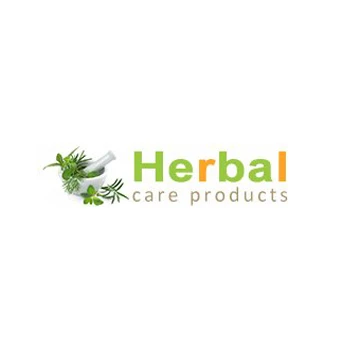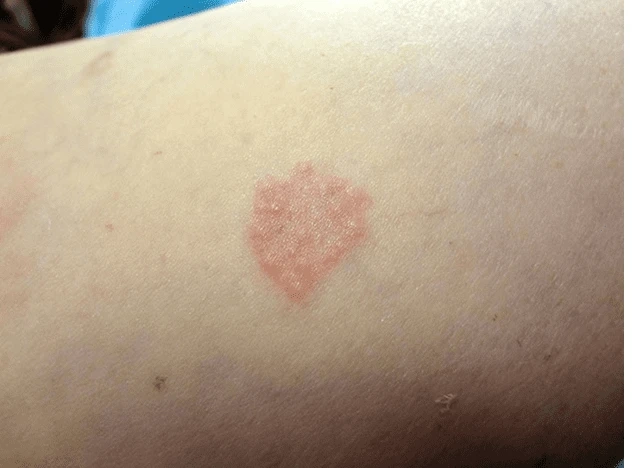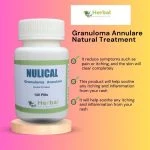Where we delve into the world of granuloma annulare and its various treatment options. If you or someone you know has been diagnosed with this skin condition, you may be curious about the available treatments and how they can help manage the symptoms. Granuloma annulare is a relatively common yet often misunderstood condition characterized by raised, reddish or skin-colored bumps forming ring-like patterns on the skin. While it is generally harmless and doesn\'t cause any discomfort, the appearance of these lesions can be bothersome for some individuals. We will explore the different treatment options for granuloma annulare, ranging from topical creams and ointments to more advanced medical interventions. So, let\'s begin this journey together and discover the various ways you can effectively manage your granuloma annulare symptoms.
Understanding Granuloma Annulare
When it comes to the treatment for granuloma annulare, it is crucial to have a comprehensive understanding of the condition. To begin with, let\'s delve into what Granuloma Annulare (GA) actually is. GA is a skin disorder characterized by the presence of red or yellow raised rings or bumps that may emerge on the hands, feet, and arms. These distinctive symptoms can significantly impact an individual\'s quality of life, making appropriate treatment essential. With the aim of managing and alleviating the symptoms, several treatment options for granuloma annulare are available. These may include topical corticosteroids, which can reduce inflammation and promote healing. In more severe cases, systemic corticosteroids or other immunosuppressive medications may be prescribed. Additionally, light therapy, such as ultraviolet (UV)B or psoralen plus ultraviolet A (PUVA) therapy, can be employed to target affected areas. Other potential treatments include cryotherapy, laser therapy, and the application of various creams or ointments containing retinoids or calcineurin inhibitors. However, it is important to note that the effectiveness of these treatment approaches can vary from person to person. Therefore, it is essential to consult with a healthcare professional who can assess the individual case and determine the most suitable treatment plan for managing granuloma annulare effectively.
All in all, understanding the symptoms and the different forms of granuloma annulare (GA) is crucial when considering treatment options. It is important to note that there are two main forms of this condition: localized and generalized. Localized GA typically occurs in one area and often resolves without any treatment, which may provide some reassurance to those diagnosed with this form. However, for individuals with generalized GA, a more widespread occurrence of the condition may necessitate medical intervention. This could involve various treatment approaches such as corticosteroid creams, light therapy, or oral medications. Seeking professional medical advice is always recommended in order to determine the most appropriate and effective approach to treat this particular form of dermatological condition.
Treatment Options for Granuloma Annulare
When it comes to the treatment for granuloma annulare, individuals have a range of options to consider. One commonly used approach is the application of topical steroids, which are effective in reducing inflammation and alleviating symptoms. Phototherapy, another viable choice, involves exposing the affected skin to ultraviolet light, helping to promote healing and alleviate the appearance of lesions. For more severe cases, systemic corticosteroids may be prescribed to effectively manage symptoms throughout the body. Additionally, immunosuppressants may be suggested as a treatment option, as they work to suppress the immune system and reduce the body\'s response to the condition. Overall, the available treatments aim to address the underlying causes of granuloma annulare and provide relief for individuals experiencing this condition.
When it comes to the treatment for granuloma annulare, topical steroids play a crucial role in reducing inflammation. Herbal Supplements for Granuloma Annulare are highly effective and can be directly applied to the affected areas of the skin. By targeting the specific locations of the lesions, topical steroids help alleviate the redness, itchiness, and discomfort associated with granuloma annulare. Another treatment option that proves beneficial in improving the appearance of the lesions is phototherapy. This therapy involves subjecting the affected areas to ultraviolet light, which helps to reduce the size and visibility of the lesions. By incorporating these treatments into a comprehensive plan, individuals with granuloma annulare can experience notable improvements in their skin condition.
In conclusion, the treatment options for granuloma annulare aim to alleviate inflammation and suppress the immune response to reduce the formation of lesions. Systemic corticosteroids play a crucial role in reducing inflammation on a larger scale, leading to improved symptom management. These medications help control the immune system\'s response, minimizing the body\'s production of antibodies that contribute to the development of granuloma annulare lesions. Immunosuppressants also play a vital role in treatment by inhibiting the immune system\'s activity, preventing excessive antibody production and further reducing the formation of lesions. By combining the use of systemic corticosteroids and immunosuppressants, healthcare providers can effectively manage granuloma annulare and provide relief to patients.




